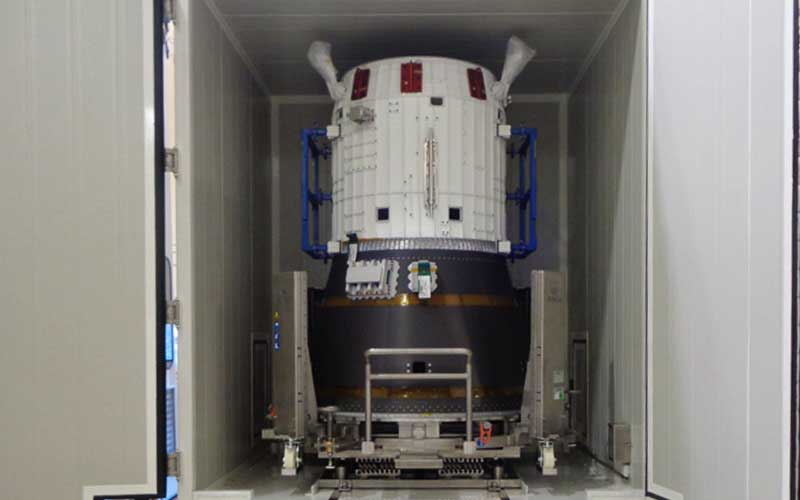
Italian rocket builder Avio has delivered the main structure of the first Space Rider service module to ESA’s ESTEC facility in the Netherlands for testing ahead of its inaugural flight.
Space Rider is an uncrewed, reusable spacecraft designed to host in-orbit experimentation and technology demonstrations. The spacecraft is capable of remaining in orbit for up to three months before returning to Earth.
The spacecraft consists of two main components: the reusable Re-entry Module, developed by Thales Alenia Space, and the expendable Service Module, led by Avio. The Service Module is a modified Vega C AVUM+ upper stage, upgraded with the AVUM Life Extension Kit (ALEK), which includes a pair of deployable solar wings developed by Leonardo.
In December 2024, Beyond Gravity announced that it had delivered the primary structure of the ALEK element to Avio’s facilities in Colleferro, Italy. The structure was then fitted with the PLA-1194 LEK adapter, a conical structure that connects ALEK to the AVUM+ upper stage.
On 21 January, Avio announced that it had shipped the completed ALEK structure to ESA’s ESTEC facility to begin the Upper Composite MEChanics (UCMEC) system qualification test campaign. The campaign will include vibration tests, acoustic response analysis, and shock propagation assessments to validate the structure’s ability to withstand the loads it will experience during launch.
Avio estimates that the UCMEC test campaign will last approximately three months. Once completed, the ALEK structure will be returned to Avio’s facilities in Colleferro, where the installation of flight equipment and subsystems will begin ahead of the spacecraft’s debut, currently expected to take place in 2027.
Space Rider’s Reusable Re-entry Module
An initial drop test of a Space Rider Re-entry Module mass simulator was conducted in August 2024. The test was completed in Sardinia and involved the 3,000-kilogram mass simulator being dropped from a helicopter at an altitude of 3.5 kilometres. The module’s parafoil recovery system was successfully deployed, guiding it down to the ground for a soft landing. This test was an initial validation of the recovery system before more intensive testing.
During his annual press briefing earlier this month, ESA Director General Josef Aschbacher announced that the agency is expected to resume drop tests of the Re-entry Module’s recovery system later this year. The Director General did, however, offer few specific details about the nature of the tests and when they would occur.

